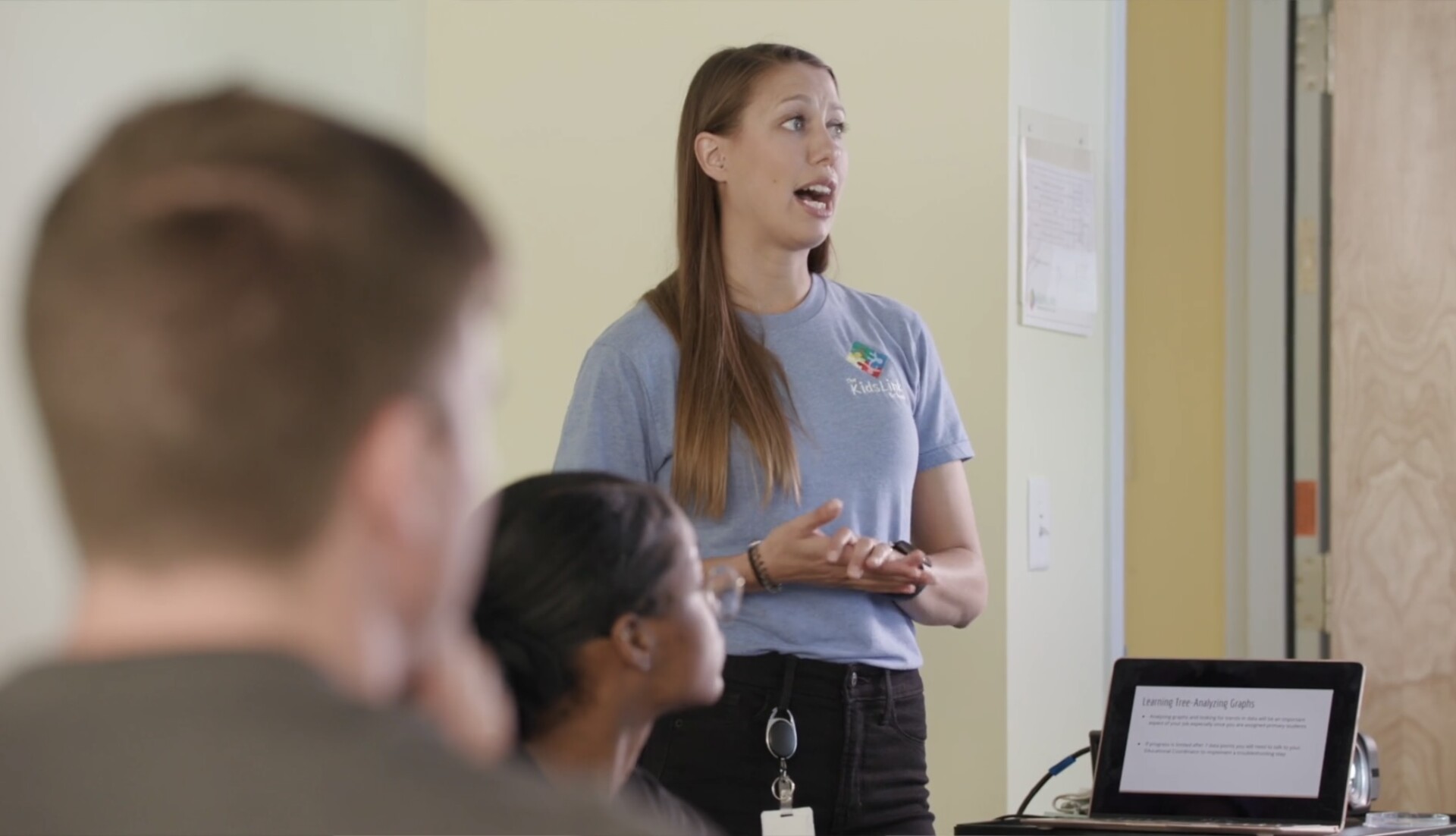School Program

Methodology
- KidsLink School implements only those interventions for which there exists scientific evidence to support their effectiveness and utility.
- Consistent with the KidsLink Neurobehavioral Center mission, The KidsLink School strongly embraces an interdisciplinary approach to intervention, including collaboration among medical professionals, psychologists, mental health professionals, behavior analysts, speech and language pathologists, occupational therapists, physical therapists, educators, vocational specialists and related services personnel, as deemed appropriate to meet the comprehensive needs of our students.
- Applied behavior analysis (ABA) is a science from which numerous teaching tools are derived. ABA interventions are commonly used in the treatment of individuals with autism spectrum disorders.
- Discrete trial training (DTT) is one form of ABA; other ABA-based interventions include the use of positive reinforcement, behavioral momentum, token economies, and differential attention/reinforcement.
- Specific measures are taken to enhance generalization of all skills.
- We offer home visits by our staff, and we provide training in the home.

Therapies
Based upon the data and assessment, the specific needs of students are addressed throughout the school environment. In addition to consultation to the clinical team therapies typically include individual, small group and large group sessions.
Social activity time is used to grow play, gross motor, fine motor, communication, socialization and other important skills. Students participate with similar peers within therapy, social as well as snack/lunch periods. Learning and intervention are continuous throughout the day in a variety of activities and contexts as well with multiple staff members. A daily home communication binder is used to stay in communication with the family and to be partners in the learning and therapy process. Parents are encouraged to participate in periodic observations of their student.
Length of a child’s program is dependent upon the individual child. The Academy of Pediatrics currently recommends between 25 and 40 hours of behaviorally based intensive intervention per week. Such intensive structure offers the most effective amount of intervention and is proven by research and recommended by the U.S. Surgeon General.
Speech and Occupational therapies are included in curriculums as determined by a student’s Individualized Education Program. These therapy services are provided by the Speech Language Pathologists and Occupational Therapists at KidsLink Neurobehavioral Center.
Behavior Stabilization Program
The KidsLink School Behavior Stabilization Program is an intensive educational based program that utilizes methods from Applied Behavior Analysis (ABA), Cognitive Behavior Therapy (CBT) and Dialectical Behavior Therapy (DBT).
The primary goal of the Behavior Stabilization Program is eventual reintegration back to the home school district, typically within 18-24 months. In the program students learn specific CBT and DBT tools to manage strong feelings and make better behavioral choices. Staff use principles of Applied Behavior Analysis (ABA) to develop behavior intervention plans. The combination of these therapeutic modalities has proven very effective in helping students return to stable functioning and to a lesser restrictive setting.
Students in the Behavior Stabilization Program may have educational disability categories of Emotional Disturbance, but who also typically have a developmental diagnosis. Students in this program characteristically have low to above average cognitive abilities. The goal of the program is to assist individuals in resolving their crisis, decrease symptoms and make appropriate community linkages for ongoing services as appropriate, as well as to avoid more restrictive and costly levels of care. Students have access to psychological treatment/mental health services as dictated by the IEP.
Services include:
- Health screening and psychology
- Crisis intervention and stabilization services
- Short-term life skills training and academic
- Transition support back to the districts of residence including planning, including referrals and linkage to other resources in the community
